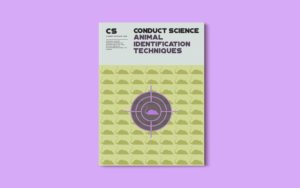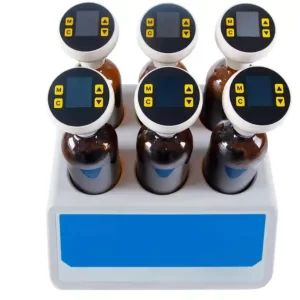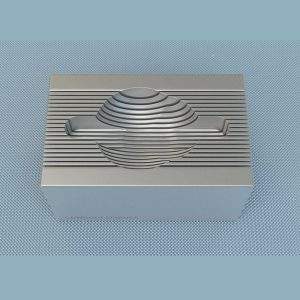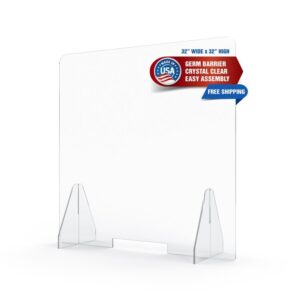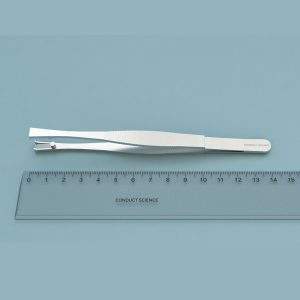Introduction
Affinity chromatography is a versatile separation protocol that uses the biological interactions for characterization and detailed analysis of sample components. It is based on highly specific interactions between two molecules, such as the interactions between enzyme and its substrate, receptor, and ligand, or antibody and antigen. These reversible interactions are used for the purification by placing one of the interacting molecules, considered as affinity ligand, onto a matrix to make a stationary phase while the target molecule is run through the mobile phase. Highly selective nature of the method enables a fast, single-step purification of the sample components from several hundred to thousand-fold. Other applications of the technique include the study of drug or hormone interactions with the binding proteins, the ability to concentrate substances present at low concentration and to separate the proteins based on their biological function. The development of the affinity liquid chromatography has enabled biomedical researchers to explore and investigate protein-protein interactions, post-translational modifications, and protein degradation.
Principle
The stationary phase of the affinity chromatography consists of a support medium (e.g., cellulose beads) on which the substrate is attached covalently to expose the reactive groups essential for enzyme binding. As the crude protein mixture is passed through the chromatography column, proteins with a binding site for the immobilized substrate bind to the stationary phase, while all the other components of the sample are eluted in the void volume of the column.
Apparatus
The affinity chromatography matrix is made of porous support materials such as agarose, polyacrylamide, polymethacrylate, cellulose, and silica. The matrix should be selected on the basis of physical and chemical properties. Spacer arms could also be incorporated between the matrix and the ligand for efficient binding and better binding environment. Ligands for the affinity chromatography are selected depending on the molecules to be separated. The ligands can be covalently immobilized or adsorbed on a surface via bio-interactions, entrapped within a pore, or conjugated with a metal ion. The isolated components can be taken for analysis from the derived elute.
Protocol
- Centrifuge the affinity column for 5 seconds to set the resin at the bottom of the column.
- Open the cap and break the bottom plug of the column.
- Place the affinity column in a 2ml tube and centrifuge it for 5 seconds to drain the buffer out.
Column equilibration
- Place the column in a 2ml collection tube and add a 0.2ml binding buffer. Centrifuge the column for 5 seconds, and discard the buffer collected in the collection tube. Perform this step twice to equilibrate the column thoroughly.
- Place the column in a 2ml collection tube.
- Carefully add 100μl in the column. Incubate it for minutes and then centrifuge for 5 seconds. Collect the flow-through in the collection tube and label this tube as Fraction 1.
- Wash the column thrice with Affinity Binding Buffer. Place the column in a new tube. Add 0.2ml Affinity Binding Buffer in the column. Centrifuge for 5 seconds and label it as Fraction 2. Perform this step twice in two separate tubes and label the tubes as Fraction 3 and Fraction 4, respectively.
- Elute the sample using a salt gradient: a mixture of the Affinity Elution Buffer and elution buffer with a high concentration of salt.
Gradient elution
- Place the column in a clean collection tube. Add 0.2ml of the lowest salt concentration buffer. Centrifuge it for 5 seconds and collect the fraction.
- Place the column in a fresh tube and apply the next elution buffer starting with fractions 6 to 10 and repeat step 7. Collect all the 6 fractions in separate 2ml tubes.
Purification of DNA-binding proteins (Kerrigan. & Kadonaga., 2001)
Oligonucleotide preparation
- Add 440 μg of each oligonucleotide mixed in [amazon link=”B01NCS0N8B” link_icon=”amazon” /] to make a total volume of 130 μl in a 1.5-ml microcentrifuge tube.
- Add 20 μl of 10× [amazon link=”B005CWJBH4″ link_icon=”amazon” /]. Incubate it for 2 minutes at 88°C, 10 minutes at 65°C, 10 minutes at 37°C, and 5 minutes at room temperature.
- Half the mixture in separate microcentrifuge tubes. To each 75-μl aliquot, add 15 μl of 20 mM adenosine triphosphate (ATP) (pH 7.0), ∼5 μCi [γ-32P] ATP, and 10 μl of 10 U/μl T4 polynucleotide kinase (100 U total). Incubate it for 2 hours at 37°C.
- Add 50 μl of 10 M [amazon link=”B00I31Z9FO” link_icon=”amazon” /] and 100 μl water in each tube to inactivate the kinase and heat for 15 minutes at 65°C. Allow the mixture to cool to room temperature.
Purification of phosphorylated oligonucleotides
- Add 750 μl of [amazon link=”B00S0MBAKO” link_icon=”amazon” /] and mix by inverting the tube. Microcentrifuge it at high speed for 15 minutes at room temperature to get the pellet containing DNA. Discard the supernatant.
- Resuspend the pellet in 225 μl [amazon link=”B01NCS0N8B” link_icon=”amazon” /].
- Add 250 μl of phenol/chloroform/isoamyl alcohol (25:24:1 ) to each tube. Vortex for 1 minute. Microcentrifuge at high speed for 5 minutes to separate phases. Transfer the upper layer (aqueous phase) to a new tube.
- Add 250 μl of 24:1 chloroform/[amazon link=”B00NGYUEVC” link_icon=”amazon” /] to the aqueous phase. Vortex for 1 minute. Microcentrifuge at high speed for 5 minutes to separate phases. Transfer the aqueous phase to a new tube.
- Add 25 μl of [amazon link=”B001UFLSPK” link_icon=”amazon” /] (3 M) to aqueous phase and vortex.
- Add 750 μl of 100% ethanol and mix by inversion. Microcentrifuge at high speed for 15 minutes to pellet DNA. Discard the supernatant.
- Wash the pellet with 75% ethanol (800 μl) and vortex. Microcentrifuge at high speed for 5 minutes. Discard the supernatant.
- Dry the pellet using the vacuum evaporator.
Ligation
- Add 65 μl water and 10 μl of 10× linker/[amazon link=”B07328LPBK” link_icon=”amazon” /] to the derived pellets.
- Dissolve the DNA by vortexing.
- Add 20 μl of 20 mM ATP (pH 7.0) and 5 μl of 6000 U/ml [amazon link=”B017MX4SYG” link_icon=”amazon” /].
- Incubate for 2 hours at room temperature or 15°C overnight.
- Monitor the ligation reaction on agarose gel electrophoresis, using 0.5 μl of ligation reaction per gel lane. Visualize the DNA with the help of ethidium bromide staining and UV photography.
Purification of oligonucleotide multimers
- Add 100 μl buffered phenol to the 100-μl of ligation reactions and vortex it for 1 minute. Microcentrifuge at high speed for 5 minutes at room temperature. Transfer the aqueous phase to a new tube.
- Add 100 μl of chloroform/isoamyl alcohol (24:1) to the aqueous phase. Vortex for 60 seconds and microcentrifuge at high speed for 5 minutes at room temperature. Transfer the aqueous phase to a new tube.
- Add 33 μl of 10 M ammonium acetate to the aqueous phase and vortex it.
- Add 133 μl [amazon link=”B003D8QFQO” link_icon=”amazon” /] and mix by inverting the tube. Incubate for 20 minutes at -20°C. Then, microcentrifuge at high speed for 15 minutes to obtain DNA in the pellet. Discard the supernatant.
- Add 225 μl TE buffer and vortex to dissolve the pellet. Add 25 μl of 3 M sodium acetate and vortex again.
- Add 750 μl of 100% ethanol and mix by inverting the tube. Microcentrifuge at high speed for 15 minutes to obtain the DNA in the pellet. Discard the supernatant.
- Wash the DNA twice with 75% ethanol. Dry the pellet using the vacuum evaporator.
- Dissolve the DNA in 50 μl water and store it at -20°C.
Preparation of CNBr-activated Sepharose
- Place 10 to 15 ml of [amazon link=”B00KIRT47A” link_icon=”amazon” /] in a 60-ml glass funnel and wash it extensively with 500 ml water.
- Transfer moist Sepharose resin to a 25-ml graduated cylinder. Add water to make a final volume to 20 ml. Transfer the slurry to a 150-ml glass beaker containing a magnetic stir bar. Place a beaker in a water bath equilibrated to 15°C and set up over a magnetic stirrer in a fume hood.
- In the fume hood, measure 1.1 g [amazon link=”B017OBNNDS” link_icon=”amazon” /] and add in a 25-ml Erlenmeyer flask. Add 2 ml [amazon link=”B00DYO62UG” link_icon=”amazon” /] to dissolve the CNBr. Add the resulting CNBr solution dropwise for 1 minute to the stirring Sepharose slurry.
- Add 30 μl of 5 N [amazon link=”B06W57NL8S” link_icon=”amazon” /] to the stirring mixture every 10 sec for 10 min until 1.8 ml of the NaOH is added.
- Immediately add 100 ml ice-cold water in the beaker and transfer the mixture to a 60-ml coarse-sintered glass funnel.
- Wash the resin with four 100-ml washes of ice-cold (≤4°C) water followed by two 100-ml washes of ice-cold 10 mM potassium phosphate (pH 8.0) in the fume hood.
- Immediately transfer the resin to a 15-ml polypropylene screw-cap tube. Add 4 ml of 10 mM [amazon link=”B00WSDILWQ” link_icon=”amazon” /] (pH 8.0) until it becomes a thick slurry.
Oligonucleotide multimers and CNBr-Sepharose coupling
- Add the two 50-μl aliquots of DNA from step 25. Incubate it on a rotating wheel overnight at room temperature.
- In the fume hood, add the resin in a 60-ml coarse-sintered glass funnel and wash it twice with 100-ml of water and once with 100-ml wash of 1 M [amazon link=”B078NGC71P” link_icon=”amazon” /], (pH 8.0).
- In the fume hood, transfer the resin to a 15-ml polypropylene screw-cap tube.
- Add 1 M ethanolamine hydrochloride (pH 8.0) until the mixture becomes a smooth slurry.
- Incubate the tube on a rotating wheel for 2 to 4 hours at room temperature.
- Wash the resin with 100 ml of 10 mM potassium phosphate (pH 8.0), 100 ml of 1 M potassium phosphate (pH 8.0), 100 ml of 1 M [amazon link=”B00028M02Q” link_icon=”amazon” /], 100 ml water, and 100 ml column storage buffer in a 60-ml coarse-sintered glass funnel.
- Store the resin at 4°C.
DNA affinity chromatography
- Equilibrate 1 ml DNA affinity resin in a disposable chromatography column with two washes of 10 ml buffer Z/0.1 M KCl.
- Mix the partially purified protein fraction in buffer Z/0.1 M KCl with nonspecific competitor DNA. Incubate the mixture on ice for 10 minutes.
- Centrifuge the mixture at 12,000 × g (10,000 rpm) for 10 minutes at 4°C, to pellet the insoluble protein-DNA complexes.
- Load the supernatant on the column at gravity flow (e.g., 15 ml/hr per column for Sepharose CL-2B).
- After loading the starting material, wash the column with 2-ml aliquots of buffer Z/0.1 M KCl four times.
- Elute the protein from the column by adding 1 ml portions of buffer Z/0.2 M KCl, buffer Z/0.3 M KCl, buffer Z/0.4 M KCl, buffer Z/0.5 M KCl, buffer Z/0.6 M KCl, buffer Z/0.7 M KCl, buffer Z/0.8 M KCl, and buffer Z/0.9 M KCl, followed by three 1 ml aliquots of buffer Z/1 M KCl.
- Collect 1-ml fractions corresponding to the addition of the 1-ml portions of the buffer.
- Quick-freeze the protein samples in liquid nitrogen and store them at -80°C.
- Assay the protein fractions for sequence-specific DNA-binding activity by performing a DNA-binding assay.
Assess the purity of the protein fractions using the SDS-PAGE followed by silver staining to visualize the protein.
Applications
Purification of soluble cytokine receptors and binding proteins (Novick. & Rubinstein., 2012)
Affinity chromatography is a powerful separation technique that is based on unique interaction between the target molecules and a ligand coupled covalently to a resin. It provides the target molecule in a reasonably pure state and enables its identification by partial sequencing, either by N-terminal microsequencing or by mass spectrometry. The biological activity of the purified proteins is retained in most cases allowing the assessment of their function. The method has been successfully applied to purify the receptors for IL-6, IL-1β, IL-2, IL-4, IFN-γ, TNF-α, IFN- α/β, IL-13, IL-18, IL-22, and IL-33. The ligand affinity chromatography enabled rapid and efficient isolation of seven soluble receptors corresponding to the cell-associated receptors. It is a rapid, simple, selective, and efficient purification procedure for proteins to yield thousand-fold purification in a single step.
Characterization of pH-dependent protein switches (Sagermann., Chapleau., DeLorimier., & Lei., 2009)
Enzymatic reactions are regulated and controlled by conformational changes of the involved proteins and enzymes. Specific movements of side chains, secondary structures, or protein domains facilitate the regulation of substrate selection, binding, and catalysis. The study was conducted to assess the structural effects of engineered ionizable residues in glutathione-S-transferase to convert it into a pH-dependent allosteric protein. In the charged state, the residues invoke unfavorable interactions, which induce conformational changes affecting the function of the enzyme. To test this, the researchers engineered a single aspartate, cysteine, or histidine residue at a distance from the active site of the enzyme. To evaluate the pH-dependent behavior of the mutant proteins binding the glutathione, the mutants were subjected to GSH-affinity chromatography. It was found that these mutations exhibit a strong effect on the protein’s affinity to bind glutathione. Whereas, the aspartate or histidine mutations lead to permanent nonbinding or binding versions of the protein, respectively. The crystal structures of the mutant protein GST50C under ionizing and nonionizing conditions showed that the water molecules are recruited into the hydrophobic core to produce conformational changes influencing the protein’s active site. Affinity chromatography is an indispensable technique to understand the intimate relationship between the structure and dynamics of the enzymatic reactions.
Purification of therapeutic proteins (Platis. & Labrou., 2008)
Recombinant molecules extracted from plants are potential biotherapeutics that could be used to cure several medical conditions. In the study, histamine (HIM), phenylamine (PHEM), tryptamine (TRM), and tyramine (TYRM) coupled to Sepharose CL-4B via a 1,4-butanediol diglycidyl ether spacer was used to purify human monoclonal anti-HIV antibody 2F5 (mAb 2F5) from maize (seed) and tobacco (leaf) extracts. The factors affecting the chromatographic behavior of mAb 2F5, and maize seed and tobacco leaf proteins were also determined. The adsorbents showed a reduced affinity to purify proteins from tobacco extract as compared to the maize extract. Under optimal conditions, histamine exhibited high selectivity for mAb 2F5 and presented a high extent of purification (A95% purity) and recovery (A90%) in a single step with salt elution from the maize seed extract. The antibody fractions, purified from affinity chromatography, were further analyzed on ELISA and Western blot. This showed that the antibody was completely active and free of degraded variants or modified forms. It was concluded that affinity chromatography is a versatile technique for biotherapeutics and antibody purification.
Purification of albumin and macroglobulin contamination (Magdeldin. & Moser.)
Affinity chromatography is a helpful tool for cleaning and removing excess albumin and α2- macroglobulin from samples as these components could interfere with the downstream process analysis. For this, Blue Sepharose affinity chromatography is a suitable type of affinity purification. In this method, the ligand is covalently coupled to Sepharose via a chlorotriazine ring. Albumin, to be removed, binds in a nonspecific manner by electrostatic or hydrophobic interactions with the aromatic anionic ligand. The most commonly used dye is Cibacron blue F-3-GA which can be adsorbed onto Sepharose to create an affinity column. The method has been found efficient for 90% albumin clearance.
Precautions
- Store the affinity column and proteins at 4°C. All other reagents could be stored at room temperature.
- To prevent wastage of reagents centrifuge the small vials before opening.
- Use excess ligand over the target protein in a minimal resin volume to maximize yield and minimize nonspecific binding.
- Use polypropylene or polyethylene tubes instead of polystyrene tubes to minimize protein losses due to adsorption.
- Make sure to remove the contaminants before protein purification.
- Ensure that the affinity ligand actively binds the target after the immobilization procedure.
Strengths and Limitations
- Affinity chromatography is a powerful technique to study enzymes, antibodies, and other proteins. It could also be employed in genetic engineering.
- The method offers a high degree of purity and specificity.
- The highly selective nature of the technique yields a fast, single-step purification of the sample components.
- Affinity chromatography has a wide array of applications ranging from protein purification, biotinylated molecule isolation, and vaccine development, to genetic engineering.
- The ligands used for affinity chromatography are expensive, and leakage can be observed sometimes.
- Low-productivity and non-specific adsorption may limit the use of affinity chromatography in clinical research.
References
- A. L. Kerrigan., & Kadonaga., T. J. (2001). Purification of sequence-specific DNA-binding proteins by affinity chromatography. Curr Protoc Protein Sci, Chapter 9: Unit 9.6.
- Novick., & Rubinstein., M. (2012). Ligand affinity chromatography, an indispensable method for the purification of soluble cytokine receptors and binding proteins. Methods Mol Biol, 820, 195-214.
- Platis., & Labrou., E. N. (2008). Affinity chromatography for the purification of therapeutic proteins from transgenic maize using immobilized histamine. J Sep Sci, 4, 636-45.
- Sagermann., R. R. Chapleau., E. DeLorimier., & Lei., M. (2009). Using affinity chromatography to engineer and characterize pH-dependent protein switches. Protein Sci, 18(1), 217-228.
- Magdeldin., & Moser., A. (n.d.). Affinity Chromatography: Principles and Applications.





